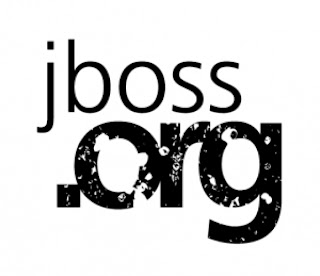- Back to Home »
- Configuring IBM MQ in JBoss
Posted by : Unknown
Monday, June 4, 2012

In today's post I will explain how to install the WebSphere MQ resource adapter on JBoss.
Installing WebSphere MQ resource adapter:
To install WebSphere MQ resource adapter, copy the file wmq.jmsra.rar (from installation directory) to the server's deploy directory, for example <install path>/server/default/deploy The resource adapter will be automatically picked up by the server.
Installing the WebSphere MQ Extended Transactional Client:
The WebSphere MQ Extended transactional client lets you use XA distributed transactions with CLIENT mode connections to a WebSphere MQ queue manager. To install it on JBoss, copy the file com.ibm.mqetclient.jar ( from installation directory ) to the server lib directory, for example <install path>/server/default/lib.
Configuring the resource adapter for your application:
The WebSphere MQ resource adapter lets you define a number of global properties. Resource definitions for outbound JCA flows are defined in a JBoss -ds.xml file named wmq.jmsra-ds.xml. The outline form of this file:
As can be seen above JCA connection factories are defined in the <tx-connection-factory> element and JMS queues and topics are defined as JCA administered object mbeans.
A complete example for our sample application defining two queues - inbound and outbound is given below:
The place holder properties are defined in the JBoss start script as:
-Dchannel=MQTEST -DhostName=localhost -DqueueManager=TST_MGR
Configuring inbound message delivery:
Message delivery to a Message-Driven Enterprise JavaBean (MDB) is configured using a JBoss-specific file named jboss.xml, located in the MDB .ear file. The contents of this file will vary, but will be of the form:
jboss.xml:
The DestinationType and Name properties must be specified. Other properties are optional, and if omitted, take on their default values.
A simple MDB definition for the inbound message is shown below:
A plain java class to send message to the output queue is shown below.
That's all.
Installing WebSphere MQ resource adapter:
To install WebSphere MQ resource adapter, copy the file wmq.jmsra.rar (from installation directory) to the server's deploy directory, for example <install path>/server/default/deploy The resource adapter will be automatically picked up by the server.
Installing the WebSphere MQ Extended Transactional Client:
The WebSphere MQ Extended transactional client lets you use XA distributed transactions with CLIENT mode connections to a WebSphere MQ queue manager. To install it on JBoss, copy the file com.ibm.mqetclient.jar ( from installation directory ) to the server lib directory, for example <install path>/server/default/lib.
Configuring the resource adapter for your application:
The WebSphere MQ resource adapter lets you define a number of global properties. Resource definitions for outbound JCA flows are defined in a JBoss -ds.xml file named wmq.jmsra-ds.xml. The outline form of this file:
As can be seen above JCA connection factories are defined in the <tx-connection-factory> element and JMS queues and topics are defined as JCA administered object mbeans.
A complete example for our sample application defining two queues - inbound and outbound is given below:
jms/MyAppConnectionFactory wmq.jmsra.rar true javax.jms.QueueConnectionFactory 8 36 ${channel} ${hostName} 1414 ${queueManager} CLIENT munish JmsXARealm jms/IncomingQueue jboss.jca:name='wmq.jmsra.rar',service=RARDeployment javax.jms.Queue baseQueueManagerName=${queueManager} baseQueueName=MY.APP.INBOUND.QUEUE jms/OutgoingQueue jboss.jca:name='wmq.jmsra.rar',service=RARDeployment javax.jms.Queue baseQueueManagerName=${queueManager} baseQueueName=MY.APP.OUTBOUND.QUEUE
The place holder properties are defined in the JBoss start script as:
-Dchannel=MQTEST -DhostName=localhost -DqueueManager=TST_MGR
Configuring inbound message delivery:
Message delivery to a Message-Driven Enterprise JavaBean (MDB) is configured using a JBoss-specific file named jboss.xml, located in the MDB .ear file. The contents of this file will vary, but will be of the form:
jboss.xml:
MyMessageBean DestinationType javax.jms.Queue destination MY.APP.INBOUND.QUEUE channel ${channel} hostName ${hostName} port 1414 queueManager ${queueManager} transportType CLIENT username munish wmq.jmsra.rar
The DestinationType and Name properties must be specified. Other properties are optional, and if omitted, take on their default values.
A simple MDB definition for the inbound message is shown below:
/**
* This message driven bean is used to collect asynchronously received messages.
*
* @author Munish Gogna
*/
@MessageDriven(mappedName = "jms/IncomingQueue")
public final class MyMessageBean implements javax.jms.MessageListener {
private static final org.apache.log4j.Logger LOGGER = org.apache.log4j.Logger.getLogger(MyMessageBean.class);
public void onMessage(final javax.jms.Message message) {
LOGGER.info("Received message: " + message);
// TODO - do processing with the message here
}
}
A plain java class to send message to the output queue is shown below.
/**
* This class is used to send text messages to a queue.
*
* @author Munish Gogna
*/
public final class MessageSender {
private static final org.apache.log4j.Logger LOGGER = org.apache.log4j.Logger.getLogger(MessageSender.class);
/**
* A coarse-grained method, nothing fancy. In actual applications please re factor the code and
* handle the exceptions properly.
*
* @throws Exception
*/
public void send(final String message) throws Exception {
if (message == null) {
throw new IllegalArgumentException("Parameter message cannot be null");
}
javax.jms.QueueConnection connection = null;
javax.jms.Session session = null;
try {
javax.naming.Context fContext = new javax.naming.InitialContext();
javax.jms.QueueConnectionFactory fConnectionFactory = (javax.jms.QueueConnectionFactory) fContext
.lookup("java:jms/MyAppConnectionFactory");
connection = fConnectionFactory.createQueueConnection();
session = connection.createSession(false, javax.jms.Session.AUTO_ACKNOWLEDGE);
final javax.naming.Context jndiContext = new javax.naming.InitialContext();
final javax.jms.Destination destination = (javax.jms.Destination) jndiContext.lookup("jms/OutgoingQueue");
final javax.jms.MessageProducer messageProducer = session.createProducer(destination);
final javax.jms.TextMessage textMessage = session.createTextMessage(message);
messageProducer.send(textMessage);
messageProducer.close();
} catch (Exception nex) {
throw nex;
} finally {
if (session != null) {
try {
session.close();
} catch (JMSException e) {
LOGGER.error("Failed to close JMS session", e);
}
}
if (connection != null) {
try {
connection.close();
} catch (JMSException e) {
LOGGER.error("Failed to close JMS connection", e);
}
}
}
}
}
A utilty called RFHUTILC.EXE can be used to connect to remote queues.That's all.













Thanks much! Could you please tell us which versions of JBoss and WSMQ you were using?
ReplyDeleteBest Regards,
Rick
Hi Rick,
ReplyDeletesorry for late reply - it was IBM MQ 6.0 on JBoss 5.1 to be precise.